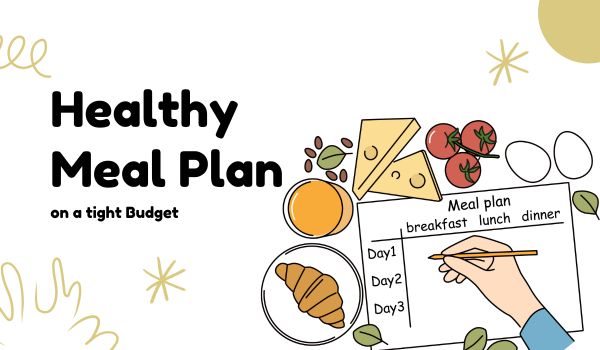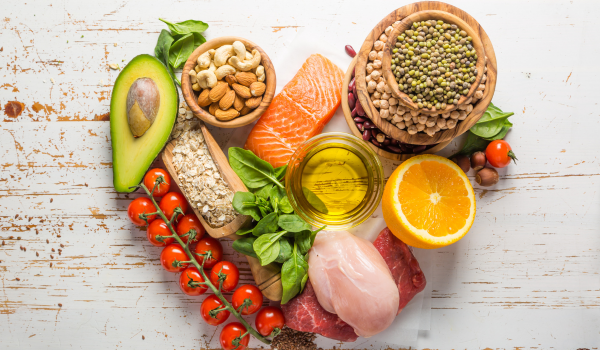Why cook at home
Living a busy, fast-paced life can make it hard to find motivation to cook. However, home-cooked meals offer significant benefits over restaurant dining. When you eat out often, you’re likely consuming more calories, sodium, and unhealthy fats due to large portion sizes and limited ingredient control.
Cooking at home allows you to choose fresher ingredients, reduce excess sugar and salt, and better manage your portion sizes. With a little planning, home cooking becomes a realistic, enjoyable, and health-conscious routine.
Start with a smart plan
Meal planning is one of the most effective strategies to cook efficiently. Although it takes a few minutes upfront, it can save hours of time, reduce food waste, and help you stay committed to healthy eating goals.
An easy and fun way to plan meals is to assign theme nights to each day of the week:
-
Meatless Monday
-
Taco Tuesday
-
Leftover Wednesday
-
Breakfast-for-dinner Thursday
-
Fish Friday
-
Soup & Salad Saturday
-
Meal Prep Sunday
This structure simplifies grocery shopping and helps reduce decision fatigue.
Build balanced meals with ease
Even if you’re not meal planning, you can still prepare a healthy meal using the plate method. This approach ensures nutritional balance in every serving:
-
Half your plate should be vegetables
-
One quarter should be lean protein
-
One quarter should be whole grains
Add fruit or a dairy product as a side. If your meal lacks veggies, quickly toss together a spinach salad or add sliced carrots and cucumbers to the plate.
Step-by-step meal planning
Set aside dedicated prep time
Pick two days a week to prepare ingredients in advance. Chop vegetables, marinate proteins, cook whole grains, and portion everything into containers so that assembling meals becomes a breeze.
Use batch cooking techniques
Cooking in bulk saves both time and effort. Try these batch ideas:
-
Cook a large batch of brown rice to use in stir-fries, grain bowls, or soups.
-
Brown several pounds of lean ground meat. Use for tacos, casseroles, pasta, or salads.
-
Boil pasta for tonight’s dinner and save extra for a pasta salad tomorrow.
-
Make a big pot of soup or chili and freeze individual portions.
-
Prepare double batches of meatloaf: cook one and freeze the rest as meatballs or slices.
-
Roast chicken or a pork shoulder and use leftovers in sandwiches, wraps, or salads.
Overlap ingredients across meals
Choose recipes that share the same base ingredients to simplify shopping and prep. For instance:
-
Grilled chicken with brown rice and veggies one night
-
Chicken and veggie soup the next
-
Stir-fried rice with leftover veggies the next day
-
Veggie pizza or lasagna with prepped vegetables
This technique saves money and reduces food spoilage.
Repeat your best menus
Once you've created a few meal plans that work for your household, rotate them every few weeks. You'll reduce planning time and build consistency into your routine. Keep notes on what meals were hits (or flops), and tweak based on seasonal produce or preferences.
Creative timesaving meal ideas
Mason jar meals
Prepare layered salads, overnight oats, yogurt parfaits, or even scrambled eggs in Mason jars. They’re easy to grab, store well in the fridge, and help with portion control. Jar meals are ideal for lunch at work or a quick, nutritious breakfast.
Sheet pan dinners
Use a single sheet pan to cook entire meals. Try combos like:
-
Chicken thighs with root vegetables
-
Salmon with green beans and baby potatoes
-
Tofu with peppers and onions
-
Shrimp with asparagus and quinoa
Cut denser items smaller so everything cooks evenly. This method drastically cuts down on prep and cleanup time.
Foil pack meals
Place chicken, fish, or veggie patties on foil with frozen vegetables, seasonings, and small potatoes. Fold the foil tightly, then bake in the oven or place on the grill. You get a full meal with no mess to clean up.
Quick healthy meal ideas when you're short on time
Here are simple, nutrient-rich meals you can prepare in minutes:
-
Fried egg sandwich: Serve on whole-grain English muffin with a piece of fruit
-
Tuna or hummus lunch box: Pair with veggie sticks, crackers, and milk
-
Cold pasta salad: Mix leftover pasta with protein and light mayo
-
Microwaved oatmeal: Add berries and a boiled egg
-
Frozen healthy meals: Choose options with whole grains and <600mg sodium
-
Stir-fry: Quick-cook protein with frozen vegetables and brown rice
-
Pita pizza: Whole grain pita, light cheese, veggies, and a side salad
Make balanced eating a habit
Aim to include at least three of the five major food groups in every meal:
-
Fruits
-
Vegetables
-
Whole grains
-
Protein foods
-
Dairy
Colorful meals often mean more nutrients—so aim to "eat the rainbow" each day. When grocery shopping, think ahead to what ingredients you’ll actually use, and check your pantry to avoid duplicate purchases.
Final thoughts
Cooking healthy meals doesn’t have to be stressful or time-consuming. With a little organization, batch prep, and strategic planning, you can enjoy nutritious, affordable, and delicious food every day—even on your busiest schedule.
Remember: small steps like preparing veggies ahead of time or overlapping ingredients across meals can make a big impact on your overall health and energy levels.







.png)
.png)
.png)






.png)
.png)
.png)
.png)
.png)
.png)
.png)
.png)
.png)



.png)


.jpg)




















